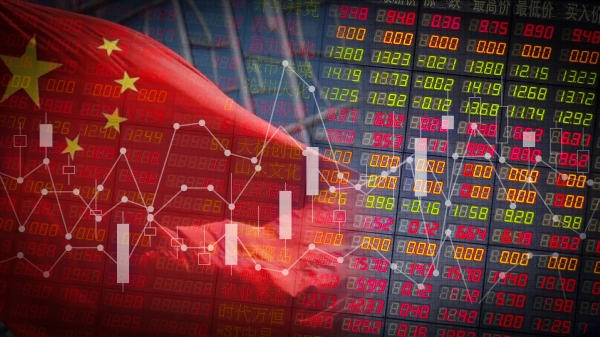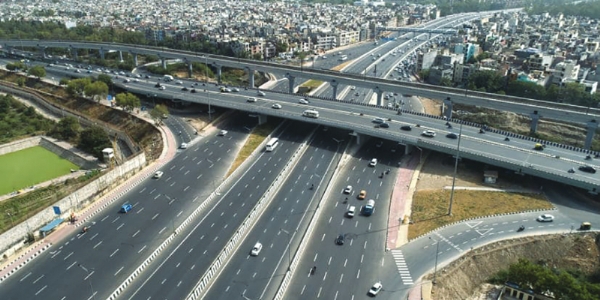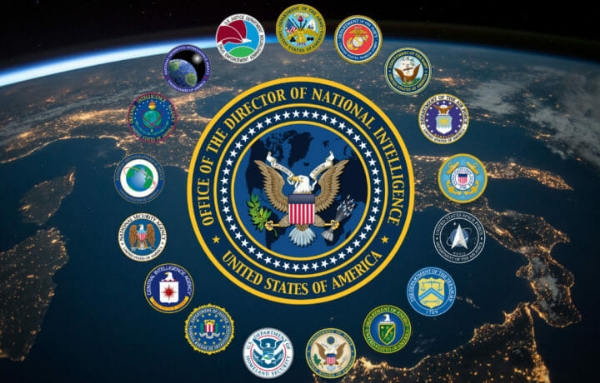#SecurityScan 94: Narco-Terrorism in Punjab, Power struggle and more
India must develop a new strategy to leverage its knowledge power in the face of emerging technologies. This requires a multi-pronged approach, focusing on multiple aspects
Total Views |
This article is a summary of important events that have taken place in last one week affecting, India's national security.
NEWS IN BRIEF
Countering Narco-Terrorism in Punjab: A Collective Effort Required
Punjab’s drug problem has reached alarming proportions, making every effort to curb this menace crucial and deserving of recognition. It is particularly commendable that numerous Punjabi celebrities, including renowned actors, singers, and sportspersons, have urged the people of Punjab to reject drugs and focus on restoring the health and vitality of the state’s youth.

The involvement of these popular figures is expected to significantly bolster the fight against this destructive force that has plagued the state for over two decades. The participation of prominent sports personalities such as India’s hockey team captain Harmanpreet Singh, and cricketers Harmanpreet Kaur and Arshdeep Singh, in the ‘Nasha-Mukt Punjab’ (Drug-Free Punjab) movement is particularly impactful. Their emphasis on fitness, a key component of sporting success, can inspire the youth to steer clear of drugs and instead pursue sports, either as a career or a healthy pastime.
The Role of Punjabi Performers: Promoting Positive Influence
Punjabi performers, especially those in the film and music industry, have a critical role to play in this battle against drugs. They must be more vocal in condemning their peers who glorify alcohol consumption, violence, and the dangerous combination of drugs and guns. The cultural shift towards positive messaging and responsible representation can have a profound impact on curbing the drug culture that has taken root in Punjab.
The Ongoing Struggle: From 'Udta Punjab' to Today
The 2016 Hindi film Udta Punjab brought national attention to Punjab’s drug crisis, sparking widespread debate. While the state government at the time argued that the portrayal was exaggerated, many observers recognized elements of truth in the depiction. Eight years later, Punjab, known for its rich agricultural heritage and as a land of brave soldiers, continues to battle the stigma of drug addiction and the threat of narco-terrorism.
A Multi-Pronged Strategy: Collaboration and Enforcement
While the support of celebrities is invaluable, Punjab also requires greater assistance from the central government to effectively combat the drug problem. A critical element in this fight is curbing cross-border smuggling of contraband, which is essential for breaking the supply chain of illegal drugs.
A multi-pronged strategy that combines stringent law enforcement with comprehensive public awareness campaigns can significantly contribute to reversing the tide of drug abuse in Punjab, paving the way for a healthier, drug-free state.
#COUNTERING CHINESE MULTI DOMAIN , GREY ZONE, HIGH BREED WARFARE
Indian Nuclear Push: Strengthening the Triad
Commissioning of INS Arighaat: A Strategic Milestone
The commissioning of INS Arighaat, India’s second nuclear-powered ballistic missile submarine, represents a significant advancement in the country’s nuclear deterrence capabilities. This move underscores India's commitment to enhancing its nuclear triad, which includes nuclear weapons deployed on land, in the air, and at sea. The urgency of this development is clear, especially as China has rapidly modernized its nuclear program, including the production of next-generation ballistic missile submarines and the initiation of regular nuclear-armed sea patrols. With China possessing 500 operational nuclear warheads compared to India's 172, the gap is substantial. However, India maintains close ties with both the US and Russia, nations with over 1,700 such warheads each.
India's Response to Beijing’s Assertiveness
Beijing’s increasing assertiveness in the Indian Ocean Region has kept Delhi vigilant. India is actively strengthening the undersea leg of its nuclear triad and developing long-range missiles. The deployment of INS Arighaat is intended to send a clear message to China that India is a formidable force in the maritime domain.
Self-Reliance in Defense: Aatmanirbharta in Action
It is commendable that INS Arighaat is equipped with indigenous systems and equipment, conceptualized, designed, manufactured, and integrated by Indian scientists, industry, and naval personnel. This achievement highlights the importance of aatmanirbharta (self-reliance) in the defense sector for a nation that remains one of the world’s largest arms importers. The recent push by the US to engage China in nuclear arms talks reflects growing international concern over Beijing’s rapid nuclear buildup.
As India monitors these developments, it must ensure that its ballistic submarine program continues to uphold the principle of 'credible minimum deterrence' in line with its 'no first use' policy.
The State of the Chinese Economy-Gap Between Chinese & Indian Economy is Reducing
Potential for Growth
China's economic growth has been slowing in recent years, transitioning from rapid, double-digit growth to a more moderate pace. However, it still remains one of the world's largest economies and continues to hold significant potential for growth. Key drivers of future growth include:
- Domestic Consumption: As incomes rise, Chinese consumers are spending more, which can boost domestic demand and economic activity.
- Technological Innovation: China is investing heavily in technology and innovation, which can drive productivity and create new industries.
- Infrastructure Development: Continued investment in infrastructure, such as transportation and energy, can support economic growth and improve efficiency.
Exports and Imports
China is a major global trading power, with both its exports and imports playing a significant role in its economy. While China's exports have continued to grow, there have been concerns about the impact of trade tensions with the United States and other countries.
Chinese Stock Market

The Chinese stock market has experienced both ups and downs in recent years. It has been influenced by factors such as economic growth, government policies, and global market trends. While there have been periods of volatility, the Chinese stock market remains a significant player in the global financial landscape.
Overall, the Chinese economy is facing a period of transition. While it still has significant potential for growth, it is also grappling with challenges such as slowing economic growth, trade tensions, and demographic changes.
The relative performance of the Chinese and Indian economies has been a topic of interest in recent years. While India has been one of the fastest-growing major economies globally, China's economic growth has been gradually slowing down. Here are some key points between the Chinese and Indian economies:
Economic Growth Rates:
India's Rapid Growth: India has consistently been one of the fastest-growing major economies in recent years, driven by factors like a large youth population, economic reforms, and a growing middle class.
China's Slowing Growth: China's economic growth has been moderating as it transitions to a more sustainable growth model, moving away from export-led growth towards consumption and services.
Convergence in Growth Rates:
Reduced Gap: The difference in growth rates between China and India has indeed been narrowing, with India's growth outpacing China's in some recent years.
Convergence: This convergence in growth rates suggests that the gap between the two economies may be reducing.
Factors Influencing the Trend:
Structural Differences: China's economy is more export-oriented and has a higher level of industrialization compared to India, while India's economy is driven more by domestic consumption and services.
Future Outlook:
Potential for Catching Up: While India has been closing the gap in growth rates with China, there are challenges such as infrastructure deficits, bureaucratic hurdles, and regulatory complexities that could hinder its ability to sustain rapid growth.
Rebalancing Priorities: China's focus on quality growth, technological innovation, and sustainability is likely to influence its economic trajectory in the coming years, potentially leading to a more balanced and resilient economy.
While India has been narrowing the growth differential with China and has shown strong growth momentum, China's economy remains significantly larger and more industrialized.
Declining Foreign Investment in China
Foreign investment in China is rapidly declining due to heightened geopolitical tensions and unpredictable regulatory measures. Many European Union and Japanese companies are approaching China with increased caution. Meanwhile, India is positioning itself as an attractive alternative for investors who are growing wary of China.
The Shift in Foreign Capital Flows
China, once a magnet for foreign capital due to its exceptional growth, is now seeing a significant reduction in foreign investment. From stock markets to private equity and foreign direct investment (FDI), the flow of foreign money into China is dwindling. China's stock exchanges have stopped releasing daily data on overseas fund flows, which has led to increased concerns among investors. Analysts believe that if the current trend continues, China may experience its first annual outflow from its stock market since 2016. This shift is largely attributed to foreign funds steadily withdrawing from the market, with year-to-date figures showing a negative trend as of August 19.
Private Equity Firms Reconsidering China

Top private equity firms such as Blackstone, KKR, and Carlyle have significantly slowed their investments in China. Geopolitical tensions and Beijing's tighter control over businesses have made dealmaking in China more challenging. In recent years, the number of new investments by the ten largest global buyout firms in China has plummeted, with only five small deals made this year. Concerns about the risks of investing in mainland China have led to secondary buyers demanding steep discounts, ranging from 30% to over 60%.
Foreign Direct Investment Hits a Low
Foreign direct investment (FDI) into China has reached its lowest point since the early 1990s. In 2023, China's direct investment liabilities rose by only $33 billion, an 82% decrease from 2022. This decline underscores the challenges Beijing faces in attracting overseas investment to boost its economy. The third quarter of 2023 marked the first time since 1998 that investment fell. With advanced economies raising interest rates and Beijing cutting them, there is an increasing preference among multinational companies to keep their capital outside of China.
European and Japanese Firms Losing Confidence
The 2024 Business Confidence Survey by the European Union Chamber of Commerce in China revealed a continued downward trend in business confidence among European firms, despite China's reopening in early 2023. Structural issues such as sluggish demand, overcapacity, and challenges in the real estate sector have further dampened confidence. The survey also highlighted that 68% of respondents found doing business in China more difficult, marking the highest percentage on record. Majority of Japanese firms have either reduced or maintained their investment levels in China, with many expressing a negative outlook for 2024.
India's Opportunity to Attract Foreign Investment
As foreign capital inflows into China decrease, India sees an opportunity to attract these investors. India's GDP growth forecast for 2024 has been revised upward, making it an appealing alternative for companies looking to diversify away from China. India has set an ambitious target of attracting at least $100 billion annually in foreign direct investment over the next five years. Strategic reforms are being suggested to enhance India's appeal to global investors, including reducing costs for companies relocating to India, improving the ease of doing business, and establishing a framework for evaluating investment proposals.
A Changing Investment Landscape
The decline in foreign investment in China reflects broader geopolitical and economic shifts. As China becomes a less attractive destination for foreign capital, countries like India are positioning themselves as viable alternatives. However, for India to fully capitalize on this opportunity, strategic reforms and improved investment conditions are essential.
Countering Internal & External Security Challenges
India Needs a New Approach to Knowledge Power
India must develop a new strategy to leverage its knowledge power in the face of emerging technologies. This requires a multi-pronged approach that focuses on:
- Building Better Intelligence:
- INDIA needs a dedicated agency to assess its position in emerging technologies compared to other countries.
- Existing intelligence capabilities, like those focused on military comparisons, should be expanded to encompass technological innovation.
- Universities and companies need to share information more readily with policymakers.
- Investing in National Infrastructure:

- INDIA needs a national strategic computational reserve to provide researchers with access to advanced computing power.
- This reserve could be a mix of cloud-based services, supercomputing systems at national labs, and its own smaller-scale computing clusters.
- This infrastructure would democratize access to cutting-edge resources, fostering public-benefit AI research and retaining top computer scientists in academia.
- Fixing Underlying Issues:
- Immigration reform is crucial to attract and retain the world's brightest minds who graduate from INDIAN universities.
- Indian weapons acquisition process needs reform to prioritize affordability and innovation.
- Chronic underfunding of basic research must be addressed. Increased government investment is essential, alongside continued private sector efforts.
- Prioritizing Education:
- The current system of teacher compensation, based solely on experience, needs an overhaul.
- Incentive programs that reward effective teachers and deploy them to struggling schools are promising models that deserve wider implementation.
- Investing in Knowledge for the Future
These changes are necessary to prevent the erosion of INDIA knowledge power and ensure its future strength. While export controls can play a role, the primary focus should be on nurturing domestic innovation. India must recognize that knowledge is power, and cultivate a robust knowledge ecosystem to secure its future security and prosperity.
Global Media Reactions to PM Modi's Ukraine Visit: A Balancing Act
Prime Minister Narendra Modi made history by becoming the first Indian PM to visit Ukraine since diplomatic ties were established in 1992. During his visit to Kyiv, Modi met Ukrainian President Volodymyr Zelenskyy, offering India’s support and expressing solidarity with the war-stricken nation. This visit, which came just months after Modi’s trip to Moscow, has garnered significant global media attention due to its potential implications for the ongoing conflict and India’s foreign policy.
Global Media's Perspectives
Reuters: A Volatile Juncture in the Conflict
Reuters highlighted the timing of PM Modi’s visit, noting it occurred at a critical and “volatile juncture” in the ongoing war. The agency drew parallels between Modi's visits to Kyiv and Moscow, suggesting similar optics as he called for peace in both instances. Reuters also reported that Ukraine had reacted with frustration after a Russian missile struck a children’s hospital on the same day Modi met Putin in Moscow. The report underscored the importance of India's influence over Moscow, as emphasized by Mykhailo Podolyak, an adviser to Zelenskyy.
The New York Times: A Calibrated Approach

The New York Times described Modi's visit as a "carefully calibrated" move in India's relations with the warring nations. The outlet quoted Harsh V. Pant, a professor at King’s College London, who suggested that the visit was aimed at positioning India as a voice of the global south in the conflict. The visit also offered an opportunity to discuss the broader impact of the war on poorer nations.
AP: A Shift Towards Neutrality?
The Associated Press (AP) interpreted Modi’s visit as a potential shift towards a more neutral stance, balancing India's relationship with both Russia and Ukraine. Ukrainian analyst Yurii Bohdanov commented on the long and complex process of establishing relations with India, emphasizing the importance of India’s support for Ukraine’s peace efforts and its potential to influence the Global South.
BBC: Signaling Strategic Autonomy
The BBC portrayed Modi’s visit as a diplomatic tightrope, signaling that while India maintains strong ties with Russia, it is also committed to working closely with Western nations. The outlet quoted Michael Kugelman of the Wilson Centre, who remarked that the visit was a move to reassert India’s strategic autonomy and advance its national interests.
Global Times: A Symbolic Gesture
China's Global Times was critical of Modi’s visit, labeling it a "symbolic gesture" with limited potential to advance peace talks. The report suggested that India’s limited resources and influence in global issues like the Russia-Ukraine conflict would likely constrain its role as a mediator.
Moscow Times: A Gesture of Support Amidst Trade Relations
The Moscow Times noted that while Modi’s visit might be seen as a gesture of support for Ukraine, it is important to remember his recent visit to Moscow. The outlet highlighted India's ongoing trade with Russia despite Western sanctions, interpreting Modi’s visit as defiance against the West.
Al Jazeera: Potential Peacemaker Role
Al Jazeera reflected on the strategic significance of Modi’s visit, suggesting it could bolster India’s status as a potential peacemaker in the conflict. The Qatar-based outlet quoted retired Indian diplomat Anil Trigunayat, who acknowledged the challenges but emphasized the importance of pursuing peace through dialogue and diplomacy.
A Diplomatic Tightrope
PM Modi's visit to Ukraine has been interpreted in various ways by the global media, from a balancing act between conflicting allegiances to a symbolic gesture with limited impact. While the visit underscores India’s long-standing commitment to peace, it also highlights the complexities of navigating international relations amidst a major conflict
WORLD AT WAR:LESSONS FOR INDIA
The New Pillars of U.S. Power -Innovate and Anticipate: An Assessment ;What Can India Learn
For decades, U.S. policymakers have relied on a mix of hard and soft power to influence both adversaries and allies. Hard power, rooted in military strength, was used to protect friends and deter or defeat enemies. Soft power, on the other hand, involved promoting U.S. values to attract others to the American cause. While both forms of power remain important, they no longer determine a country's success as they once did. Today, the United States must focus on expanding its "knowledge power"—the ability to advance national interests through the generation of transformational technology.
The Dual Components of Knowledge Power
Knowledge power consists of two crucial elements: innovation and anticipation. Innovation refers to a nation's capacity to produce and leverage technological breakthroughs.

Anticipation involves intelligence—understanding the intentions and capabilities of foreign adversaries that might threaten U.S. interests. Traditionally, this has been the domain of U.S. spy agencies. However, as the line between domestic industry and foreign policy blurs, intelligence agencies must also help the government grasp the implications of technologies developed domestically.
Looking Inward: The Domestic Focus of Knowledge Power
Unlike traditional foreign policy tools that focus outward—using threats, force, and values to influence foreign actors—knowledge power requires the U.S. to look inward.
It involves harnessing ideas, talent, and technology to ensure that the United States and its allies thrive, regardless of the actions of China or other adversaries. The strength of this power lies not just in bolstering military capabilities or enhancing global appeal but in building a robust foundation at home.
Educational Proficiency: The Foundation of Innovation
The first step in building knowledge power is improving national educational proficiency. A well-educated workforce is a key driver of long-term economic growth. Historical evidence supports this: in 1960, East Asia's GDP per capita was nearly equal to that of sub-Saharan Africa. Yet, over the next 30 years, East Asia surged ahead, largely due to significant improvements in education.
Concentration of Talent: A Catalyst for Breakthroughs
Another critical indicator of knowledge power is the geographic concentration of technological talent. Countries with clusters of leading scientists and engineers are more likely to make critical advancements. Proximity matters—having the world's top minds working closely together in labs fosters the environment necessary for technological breakthroughs. This is why top scientists recruit superstar teams and collaborate in physical spaces rather than working in isolation.
The Role of Research Universities in Innovation
The long-term power of a nation also depends on the health of its research universities. While companies play a vital role in technological innovation, the process often begins much earlier—in university labs and classrooms.
Unlike companies, which must focus on near-term commercial prospects, research universities are free to explore basic research, which delves into questions on the frontiers of knowledge. Although basic research may take decades to yield practical applications, it is the bedrock of many commercial breakthroughs, such as radar, GPS, and the Internet.
The Hidden Foundations of Technological Success
Recent advancements, such as mRNA-based COVID-19 vaccines, may appear to be overnight successes, but they are built on decades of basic research conducted at universities.
Before pharmaceutical companies could develop these vaccines, academic researchers had spent years discovering that mRNA could activate and block protein cells and learning how to deliver it to human cells to trigger an immune response.
Similarly, the cryptographic algorithms that secure data on the Internet today originated from years of academic research in pure mathematics. Many of the latest advances in AI, from ChatGPT to image recognition, are also rooted in pioneering work conducted at institutions like the University of Toronto, the University of Montreal, and Stanford University.
Building a Future on Knowledge Power
To maintain its global leadership, the United States must shift its focus to nurturing and expanding its knowledge power. By fostering innovation and enhancing its ability to anticipate technological and geopolitical trends, the U.S. can secure its future prosperity and security. This requires a deep investment in education, research, and the strategic concentration of talent, ensuring that the country remains at the forefront of technological advancement.
--



